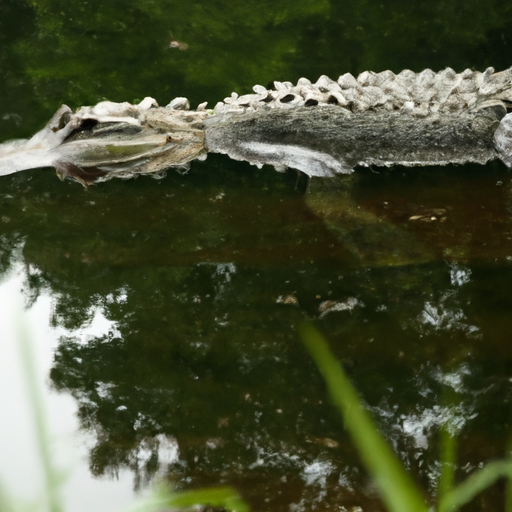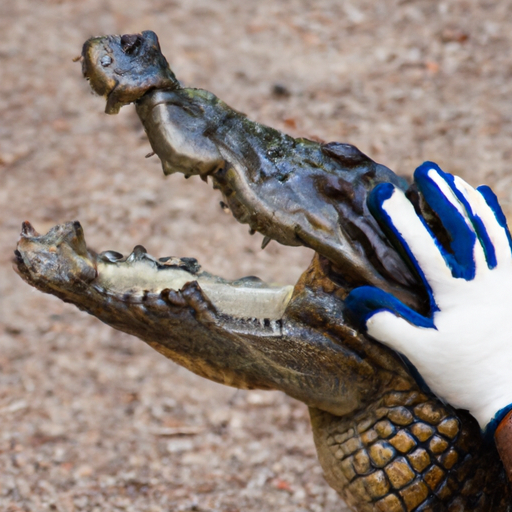So you’ve decided to take a vacation to the sunny island of Aruba, and now you can’t help but wonder, are there alligators in Aruba?
It’s a valid question, considering the abundance of wildlife that inhabits the island. In this article, we’ll explore the possibility of encountering alligators in Aruba and shed some light on the fascinating fauna that calls this Caribbean paradise home.
Get ready to discover the truth about these mysterious reptiles and whether you should be on the lookout during your trip to Aruba.
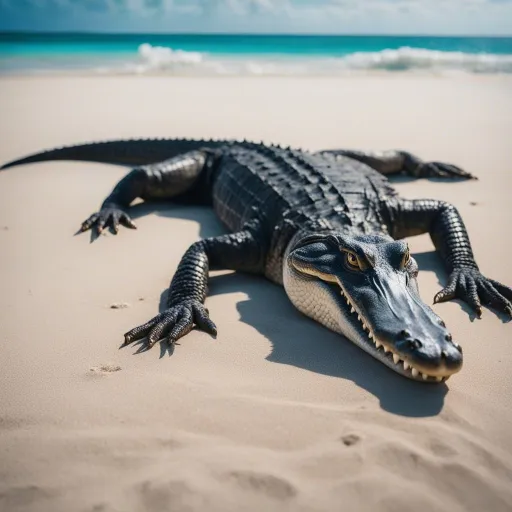
Climate and Geography of Aruba
Aruba, a small island located in the southern Caribbean Sea, is known for its beautiful climate and unique geography.
As a popular tourist destination, it is essential to understand the climate and geography of Aruba before embarking on a journey to this tropical paradise.
Aruba’s Climate
Aruba enjoys a delightful tropical marine climate that offers warm temperatures throughout the year.
With an average temperature ranging from 80 to 85 degrees Fahrenheit, it is no wonder that Aruba is often referred to as “One Happy Island.”
The island experiences a constant gentle breeze, which helps to mitigate the heat and provides relief from the tropical sun.
One of the key features of Aruba’s climate is its low rainfall. The island receives a mere 20 inches of precipitation annually, making it one of the driest places in the Caribbean.
This dry climate is ideal for those seeking a sunny and dry vacation escape, as rainfall is a rarity in Aruba.
Aruba’s Geography
Geographically, Aruba is rather unique compared to other Caribbean islands. It belongs to a group of islands known as the Lesser Antilles, which lie just north of the Venezuelan coast. Aruba is relatively small, spanning approximately 20 miles long and 6 miles wide, with a total land area of only 75 square miles.
The island’s terrain features a mostly flat and arid landscape, characterized by sparse vegetation and rocky outcrops. Aruba is known for its stunning white sandy beaches, such as Eagle Beach and Palm Beach, which are a hallmark of the island’s geography.
In addition to its beautiful beaches, Aruba boasts a diverse range of geological formations. Visitors can explore the Arikok National Park, which encompasses nearly 20% of the island’s total land area. The park showcases impressive limestone formations, hidden caves, and towering hills that provide breathtaking panoramic views of the island.
Native Wildlife of Aruba
When it comes to wildlife, Aruba is home to a variety of unique and captivating species. From colorful birds to vibrant marine life, the island offers nature enthusiasts an opportunity to observe and appreciate its native fauna.
Birds
Aruba is a paradise for bird lovers, as the island is visited by over 170 species of birds. From the stunning Caribbean flamingo to the vibrant yellow-breasted troupial, the avian diversity in Aruba is awe-inspiring. Visitors can catch a glimpse of these magnificent creatures by exploring the island’s national parks and nature reserves.
Marine Life
Surrounded by crystal-clear turquoise waters, Aruba boasts an underwater world teeming with life. Snorkelers and scuba divers can witness a kaleidoscope of colorful fish, magnificent coral reef formations, and even encounter gentle giants like sea turtles and rays. The island’s thriving marine ecosystem serves as a reminder of the importance of conserving and protecting these valuable habitats.
Reptiles and Amphibians
Aruba is also home to a variety of reptiles and amphibians that have adapted to the island’s arid climate. From the iconic Aruban whiptail lizard to the elusive Aruban rattlesnake, these creatures play a crucial role in maintaining the delicate ecological balance of the island. Observing them in their natural habitat offers a unique opportunity to gain insight into the intricacies of Aruba’s biodiversity.
Mammals
While the mammalian population in Aruba is not as diverse as its avian or marine counterparts, the island is still home to several fascinating mammal species. Visitors may encounter creatures like the Aruban long-nosed bat or the Aruban burrowing owl, both of which have adapted to survive in the island’s distinctive environment.
Native Reptiles of Aruba
Aruba is renowned for its array of captivating reptiles, which thrive in the arid and rocky landscape. Let’s explore some of the native reptiles that call Aruba their home.
Aruban Whiptail Lizard
The Aruban whiptail lizard, scientifically known as Cnemidophorus arubensis, is a remarkable reptile endemic to Aruba. This lizard species is well-adapted to survive in the island’s arid environment, thanks to its ability to regulate its body temperature. With a slender body and long tail, the whiptail lizard moves swiftly across the rocky terrain, displaying its agility and grace.
Aruban Rattlesnake
Another fascinating reptile indigenous to Aruba is the Aruban rattlesnake, or Crotalus durissus unicolor. Despite its venomous nature, the rattlesnake plays a vital role in maintaining the ecological balance of the island by controlling the population of rodents. Efforts are made to educate and raise awareness among locals and tourists about the importance of coexisting responsibly with this unique species.
Aruban Parrot Snake
The Aruban parrot snake, or Leptophis ahaetulla bilineata, is a slender and non-venomous snake known for its vibrant green coloration. This elusive species is an integral part of Aruba’s ecosystem, preying on small animals and helping to control their populations. Spotting this snake requires patience and a keen eye, as they are masters of camouflage amidst the island’s vegetation.
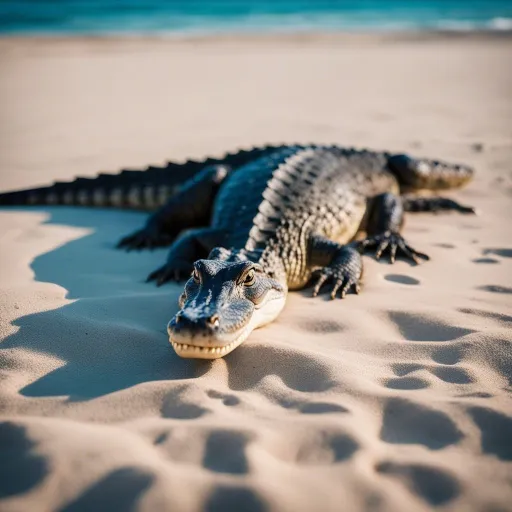
Presence of Alligators in Aruba
When discussing Aruba’s wildlife, one question often arises – are there alligators in Aruba? Let’s delve into the historical and ecological factors surrounding this intriguing topic.
Historical Context
Historically, the presence of alligators in Aruba is rather unlikely. The island’s geography, characterized by arid flatlands and limited freshwater sources, does not provide a suitable habitat for alligators to thrive. Aruba’s natural conditions, coupled with its isolation from mainland territories, make it highly improbable for alligators to naturally inhabit the island.
Ecological Factors
In addition to the historical context, the ecological factors of Aruba further support the absence of alligators. Alligator species typically require freshwater habitats, such as wetlands or swamps, to fulfill their physical and dietary needs. Aruba, being a relatively dry and rocky island, lacks the necessary conditions for the establishment and sustenance of alligator populations.
While there have been occasional sightings and rumors of alligators in Aruba, these are often unfounded and can be attributed to misidentification or sensationalism. It is important to rely on scientific evidence and expert knowledge when considering the presence of specific wildlife species in any geographical location.
Alligator Facts
Since alligators are not native to Aruba, let’s explore some interesting facts about these formidable reptiles.
Physical Characteristics
Alligators are large reptiles distinguishable by their broad snouts, powerful jaws, and rough, armored skin. They can grow to impressive sizes, with adult males averaging 10 to 15 feet in length and weighing up to 1,000 pounds. These mighty creatures have sharp, conical teeth and muscular tails that aid in swimming and propulsion.
Habitat and Distribution
Alligators primarily inhabit freshwater environments, such as swamps, marshes, and lakes, where they can find an abundance of prey and suitable nesting sites. They are native to the southeastern United States, with the American alligator being the most iconic and widespread species in this region.
Diet and Behavior
Alligators are opportunistic predators, feeding on a variety of prey including fish, amphibians, reptiles, birds, and mammals. They have a keen sense of hearing and vision, allowing them to stealthily ambush their unsuspecting prey. Although primarily carnivorous, alligators have been observed consuming fruits and vegetation as well.
Alligators are generally solitary creatures, with adults maintaining their territories and socializing mainly during the mating season. These reptiles are also known for their impressive ability to regulate their body temperature, often basking in the sun to warm themselves or submerging in water to cool off.
Alligator Species in the Caribbean
While alligators may not inhabit Aruba, there are other alligator species commonly found in the Caribbean region.
American Alligator
The American alligator (Alligator mississippiensis) is the largest reptile in North America and is native to the southeastern United States. This species is known for its distinctive “U”-shaped snout and is considered a keystone species in its ecosystem.
Spectacled Caiman
The spectacled caiman (Caiman crocodilus), although commonly referred to as a crocodile, is actually a member of the alligator family. Found throughout Central and South America, as well as the Caribbean, this species is recognizable by the bony ridge between its eyes, resembling a pair of spectacles.
Cuban Crocodile
The Cuban crocodile (Crocodylus rhombifer) is a critically endangered species native to Cuba. Known for its striking coloration and aggression, this crocodile species has a restricted distribution and faces numerous threats to its survival.
Traveling to Aruba: Safety and Wildlife Encounters
Aruba offers a unique opportunity to immerse oneself in nature and encounter diverse wildlife. However, it is important to prioritize safety and adhere to wildlife observation guidelines to ensure a memorable and responsible experience.
Safety Considerations
When exploring Aruba’s natural landscapes, it is crucial to prioritize personal safety. Be aware of your surroundings and avoid venturing into unfamiliar areas without proper guidance or permits. It is also advisable to wear appropriate clothing and footwear to protect yourself from potential hazards, such as rough terrain or stinging insects.
Wildlife Observation Guidelines
To enjoy wildlife encounters responsibly, it is essential to respect the animals and their habitats. Keep a safe distance from wildlife, as approaching too closely can disrupt their natural behavior and potentially endanger both the observer and the animal. Refrain from feeding or touching wildlife, as this can lead to artificial dependency or cause harm to the animals.
When photographing wildlife, use zoom lenses or binoculars to capture close-up shots, allowing for a respectful distance between you and the subject. Avoid using flash photography, as it can startle and distress animals.
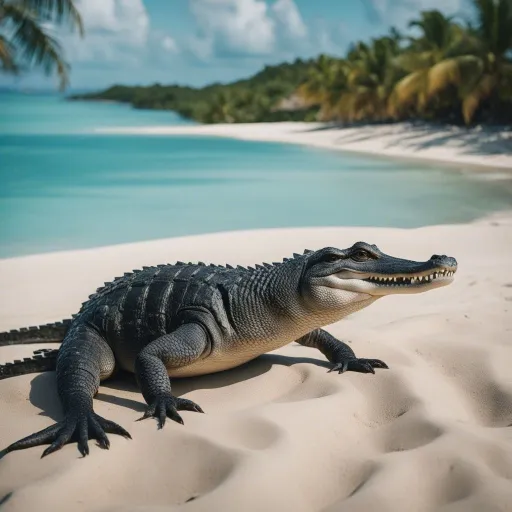
Misconceptions and Rumors
Misconceptions and rumors often circulate, especially in the age of social media. Let’s debunk some popular myths related to Aruba’s wildlife.
Popular Myths
One common myth is that Aruba is home to large populations of alligators. As discussed earlier, the historical context and ecological factors debunk this misconception, highlighting the slim chances of alligators naturally occurring in Aruba’s habitats.
Another myth is that Aruban snakes are highly venomous. While some snake species on the island are venomous, such as the Aruban rattlesnake, it is important to note that encounters with these reptiles are rare, and they typically avoid contact with humans.
Social Media Influence
The rise of social media has amplified the spread of misinformation and sensationalism. Photos or stories shared on platforms may depict alleged sightings of alligators in Aruba, but it is crucial to verify such claims through reliable sources and expert knowledge. Relying on scientific research and credible wildlife authorities helps foster a more accurate understanding of Aruba’s native species.
Aruba’s Wildlife Conservation Efforts
Aruba recognizes the importance of preserving its unique wildlife and ecosystems. The island has implemented various conservation initiatives to protect its native species and raise awareness about the significance of sustainable practices.
Protection of Native Species
Aruba has designated protected areas, such as the Arikok National Park, to safeguard its natural heritage. These protected areas serve as vital havens for native flora and fauna, ensuring the long-term survival and sustainability of various species.
Additionally, the island enforces legislation and regulations to prevent the illegal trade and exploitation of wildlife. These measures aim to curb the detrimental impacts of human activities on Aruba’s biodiversity.
Educational Programs
Aruba promotes educational programs that educate both locals and visitors about the island’s wildlife, emphasizing the value of conservation and responsible tourism. Through interactive workshops, guided tours, and informational campaigns, individuals are encouraged to actively participate in wildlife preservation efforts.
Environmental Initiatives
Aruba’s commitment to sustainability extends beyond the realm of wildlife conservation. The island has embarked on significant environmental initiatives, such as renewable energy projects and waste management practices, to minimize its ecological footprint.
By adopting a holistic approach to sustainability, Aruba aims to create a harmonious balance between environmental preservation and tourism development.
Final Thoughts
In conclusion, Aruba offers a rich tapestry of climate, geography, and wildlife that captivates the hearts of visitors worldwide.
From its idyllic beaches to its diverse ecosystems, the island holds a treasure trove of unique experiences.
While alligators do not roam the shores of Aruba, the island’s native reptiles, birds, marine life, and mammals showcase the intricate beauty of its natural world.
Travelers venturing to Aruba should prioritize safety and adhere to wildlife observation guidelines to ensure a respectful and responsible encounter.
By dispelling misconceptions, relying on scientific knowledge, and promoting sustainable tourism, we can contribute to the preservation and appreciation of Aruba’s precious wildlife for generations to come.


